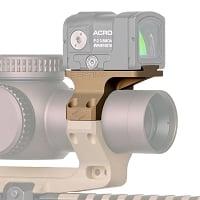Labradar is a Cutting-edge Technology

Unlike traditional radar systems that are primarily used for tracking the speed of moving objects, Labradar is a portable and compact device designed specifically for shooting sports enthusiasts, law enforcement professionals, and military personnel.
At its core, Labradar is a doppler radar system that utilizes the doppler effect to accurately measure the velocity of projectiles. The doppler labradar effect refers to the change in frequency or wavelength of a wave in relation to an observer moving relative to its source. In the context of Labradar, it involves measuring the change in frequency of the radar signal reflected off a moving projectile.
One of the key advantages of Labradar is its non-contact measurement method. Unlike traditional chronographs that require projectiles to pass through a physical barrier, Labradar can measure the velocity of projectiles at any point along their trajectory without the need for any physical interaction. This not only makes it safer and more convenient for users but also allows for a more comprehensive analysis of the projectile's behavior.
Labradar is highly versatile and can be used with a wide range of firearms and projectiles, including rifles, handguns, shotguns, and even arrows. It is not limited to any specific type of ammunition, making it suitable for various shooting disciplines and applications. This flexibility has contributed to Labradar's popularity among competitive shooters, hunters, and firearm enthusiasts who seek precise and reliable velocity data.
The device itself is a compact unit equipped with advanced signal processing capabilities. It features a high-resolution color screen that displays real-time data, including velocity, shot number, and other relevant information. Labradar also has the capability to store and export data, allowing users to analyze their shooting performance over time and make informed decisions about ammunition and firearm choices.
Setting up Labradar is a straightforward process. Users typically place the device on a stable surface, such as a tripod, and adjust its position to align with the trajectory of the projectiles. Labradar is then powered on, and users can configure various settings, such as the projectile type, caliber, and desired measurement units. Once set up, Labradar is ready to capture velocity data with a high degree of accuracy.
Labradar's applications extend beyond individual shooters. Law enforcement agencies and military units can benefit from its capabilities for testing and optimizing ammunition performance. The device can be used in training scenarios to evaluate the effectiveness of different ammunition types and to ensure consistency in projectile velocity.
In conclusion, Labradar represents a significant advancement in the field of firearms and projectile velocity measurement. Its non-contact, doppler radar technology provides users with a safe, accurate, and versatile tool for monitoring and analyzing the performance of various firearms and projectiles. Whether used by competitive shooters, hunters, law enforcement professionals, or military personnel, Labradar has become an indispensable device for those seeking precise and reliable velocity data in the world of shooting sports and beyond.
- Art
- Causes
- Crafts
- Dance
- Drinks
- Film
- Fitness
- Food
- Spiele
- Gardening
- Health
- Startseite
- Literature
- Music
- Networking
- Andere
- Party
- Religion
- Shopping
- Sports
- Theater
- Wellness
- Politics
- IT
- Relationship
- Blockchain
- NFT
- Crypto
- Fintech
- Automobile
- Faith
- Family
- Animals
- Travel
- Pets
- Coding
- Comedy
- Movie
- Spiel
- Computer



